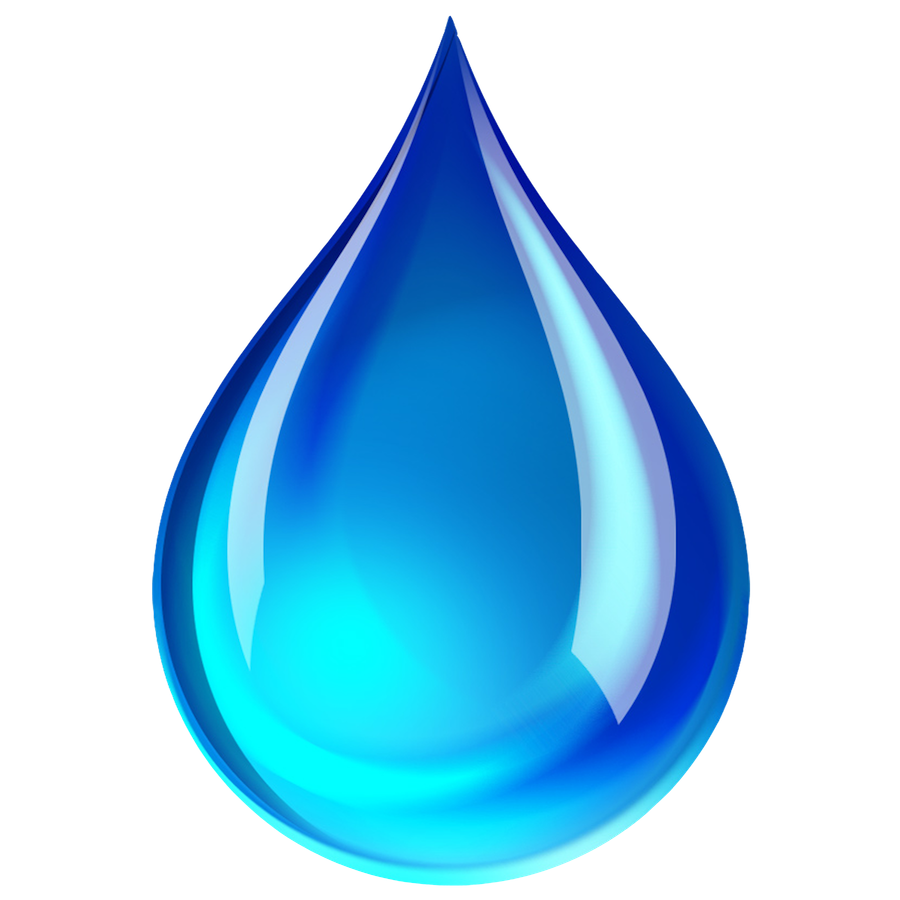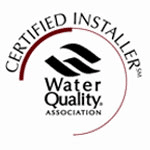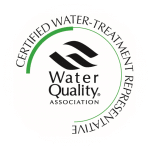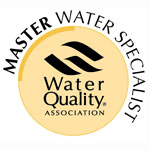Through its membership in the Water Quality Association, our company has agreed to an industry Code of Ethics and has access to the most up-to-date information available. Our prestigious certifications and knowledge base set us apart from other water treatment companies.
Click here for our WQA certified listing.
Yes! We think quality drinking water should be affordable for any budget! Ask us about our discounts, leasing, and rental options!
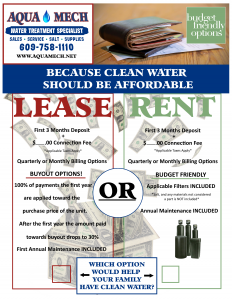
Click Here to schedule your FREE Water Analysis Today!
The more often you regenerate, the more often you’ll need to add salt. A good general rule of thumb is to check your conditioner once a month. To maintain consistently conditioned water, keep your salt level at least half-full at all times.
Yes, we are available for salt delivery! However, minimum quantities may apply, so please call the office to set up your delivery.
Your conditioner’s resin tank contains thousands of tiny resin beads. These beads hold minute electronically charged ions. When freshly regenerated, these beads are full of sodium ion from softening salt. As the hard and iron water passes through your conditioner, the hard water ions are attracted to the resin beads. There, ions of sodium are exchanged for the hard water ions. The result is soft iron free water. After several days, the beads become full of the hard water ions and can no longer soften the water. However, when your conditioner regenerates again, the beads are replenished with more sodium ions, leaving you with conditioned water.
Your certified water specialist will need to do some investigating to correctly identify the type of iron present in order to treat it properly.
Ferrous (FE++): Ferrous or dissolved iron is the most common. When water containing ferrous iron is drawn from the tap, it appears clear because the iron is still in a dissolved state. Once the water is open to the atmosphere or exposed to oxidation, the iron will begin to precipitate into ferric iron and the water will become golden to orange in color.
Ferric (FE++): Ferric iron, also known as ferric hydroxide or oxidized iron, is iron that has already been converted into an insoluble state and will appear as orange sediment. Once iron is converted to this state it can be filtered out using various types of filter media.
Bacterial iron: Unlike ferrous or ferric iron that can be diagnosed by the color of the water, bacterial or “live” iron is not readily apparent. It may appear as a feathery or lumpy sediment if visible, and if not properly treated will grow inside the treatment vessels fouling the mineral and causing staining.
Colloidal iron: Colloidal iron is comprised of very fine insoluble particles that color the water but will not settle and are almost impossible to filter without flocculation.
The most common complaint is: “My water smells like rotten eggs.” This is caused by Hydrogen Sulfide (H2S). In very high concentrations it can be quite poisonous. In levels below 1.5 ppm it is easily removed with water treatment. For other information on water odors, please read our Water 101 Article: “The Skinny on Smelly Water”
When you have hard water the minerals in the water clog the pores in your skin. With soft, conditioned, water the minerals are removed and your natural body oils lubricate your skin giving you that clean natural, feeling.
STEP 1: ALLOW TO REST FOR 24 HOURS (NO WATER USAGE)
STEP 2: HOOK A GARDEN HOSE TO YOUR PRESSURE TANK AND RUN THE WATER (THIS MAY TAKE UP TO 24 HOURS OR MORE OF CONTINUOUS FLOW)
STEP 3: TEST THE WATER FOR CHLORINE (POOL TEST KIT)
STEP 4: ONCE THERE IS NO CHLORINE LEFT FLUSH THE HOUSE
STEP 5: IN THE HOUSE TURN ON ALL OF THE TAPS AND LET THEM RUN (THIS MIGHT TAKE A FEW MINUTES)
*** STEPS MUST BE FOLLOWED IN THE ORDER GIVEN TO PROTECT YOUR WATER TREATMENT EQUIPMENT***
Occasionally, if you use salt pellets or cube-style salt which are too loosely compacted, they may revert to tiny crystals of evaporated salt – similar to table salt. These crystals may bond, creating a thick mass in your brine tank. This mushing may interrupt brine production – the key element for refreshing the resin beads in your conditioner. Without brine, your conditioner can’t produce treated water.
Bridging is a condition that sometimes occurs in the brine tank when salt sticks together forming a “bridge” that prohibits it from coming into contact with the water in the tank.
No. Salt’s sole purpose in your water conditioner is to regenerate the resin beads that actually take the hardness and iron out of your water. This exchange does not make your water taste salty or significantly increase your sodium intake.
When refilling the chlorine injection system the ratio of chlorine to tank (35 gallon) you can use either ½ gallon of sodium hypo chlorite (preferred).
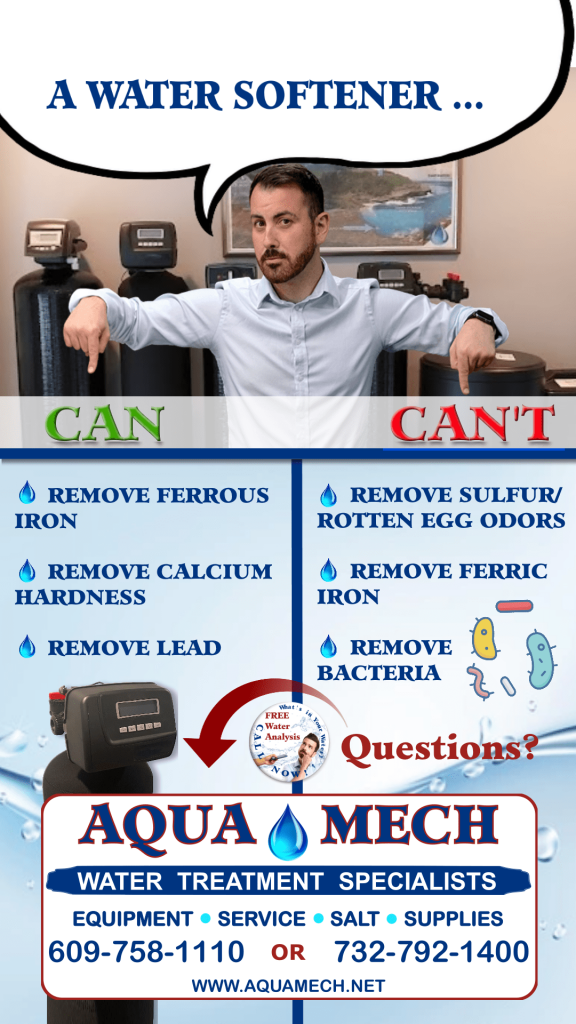
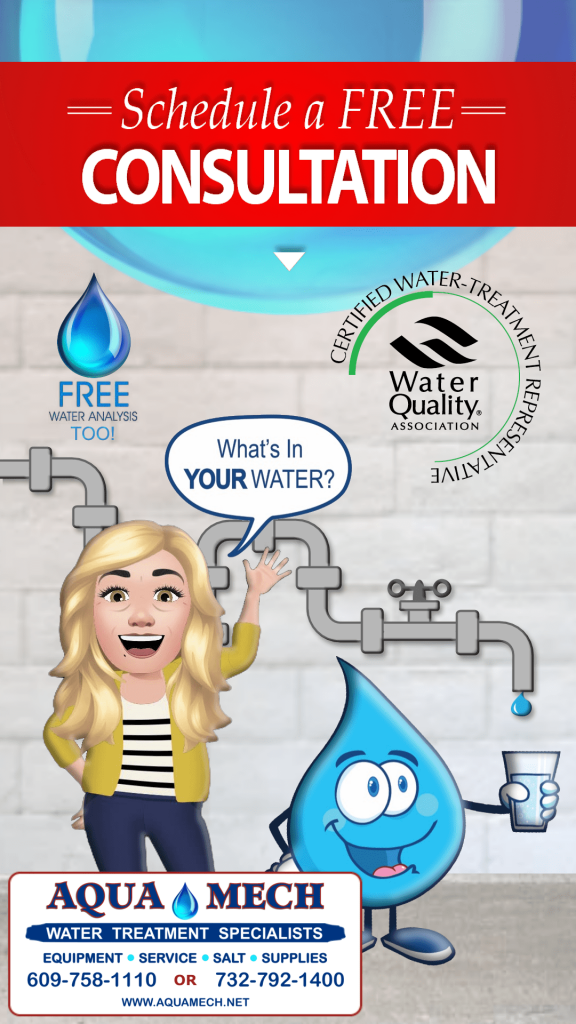
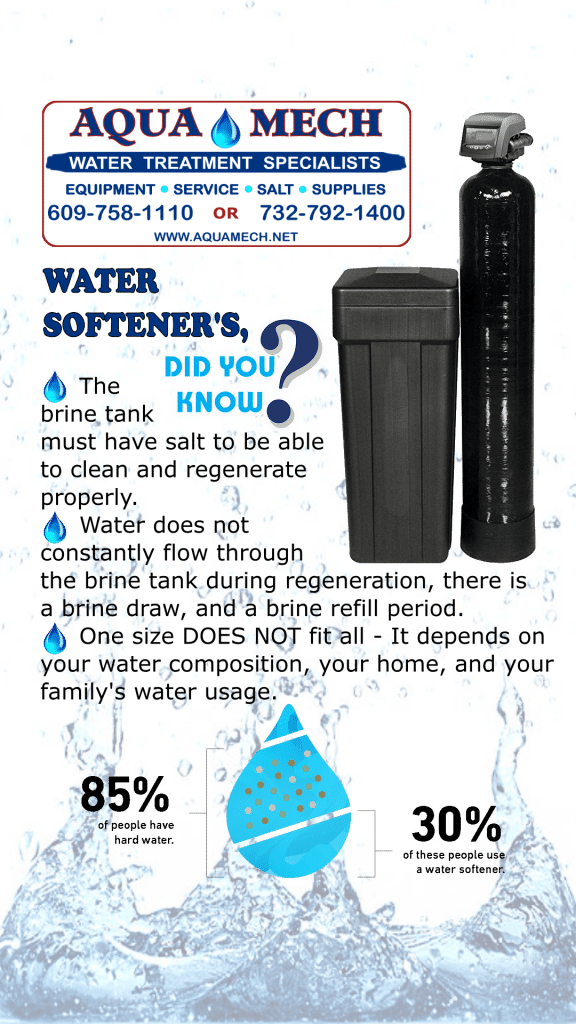
Have a General Question?
Our Affiliations and Memberships
Copyright © 2019 Aqua Mech. All rights reserved.
DEVELOPED BY CBI ![]()
